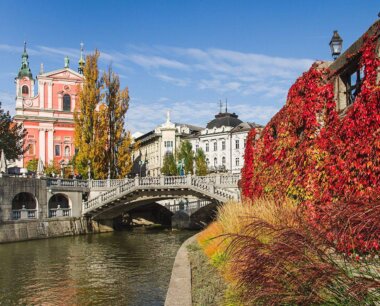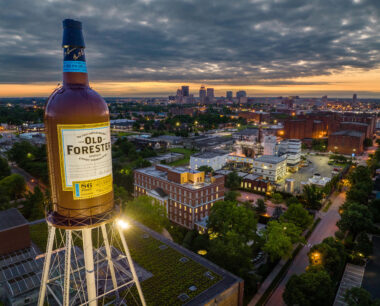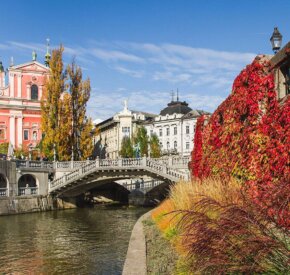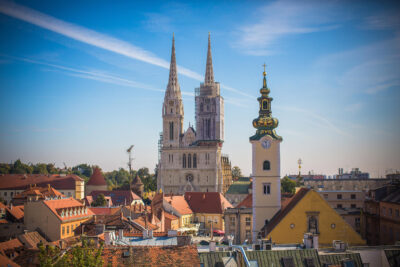
Destination guide: Zagreb, Croatia
Travel writer Mary Novakovich guides us through Croatia’s cool, classy and cultured capital
While many visitors to Croatia bypass its capital and head straight to the Adriatic coast, discerning travellers have cottoned on to Zagreb’s enticing mix of Central Europe with a dash of the Med.
Why go
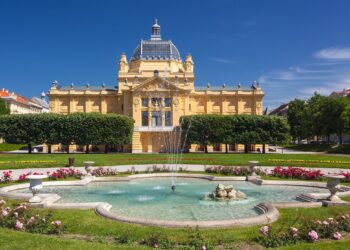
Croatia’s capital is one of the most appealing in Europe, with a café culture that’s more relaxed than you’ll find in Vienna, combined with a buzzing restaurant scene and seriously cool bars. Between Zagreb’s medieval and baroque Upper Town and stately 19th-century Habsburg-influenced Lower Town, it has a compelling collection of museums and galleries wedged among its many restaurants. In this city made for strolling, there are plenty of green spaces where you can stop and watch the world go by. Go hiking and picnicking in Sljeme mountain just outside the city, or chill out on the beach at Lake Jarun.
The highlights
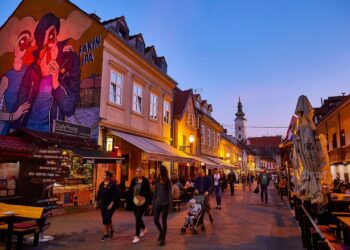
Zagreb’s heart is Ban Jelačić Square, a handsome rectangle of pastel-coloured 19th-century townhouses. From here, you’re seconds away from Zagreb’s foodie heart, Dolac market, where trestle tables under bright red umbrellas are filled daily with local produce. Make your way gently uphill to the baroque buildings of the Upper Town, one of which houses the Museum of Broken Relationships – a poignant and sometimes wryly funny collection of objects signifying lost love.
Get a crash course in the city’s history at the Zagreb City Museum at the top of the Upper Town, and head downhill via vibrant Tkalčićeva Street, a car-free thoroughfare thronging with bars and restaurants.
Back in the Lower Town, join the locals having their daily coffee fix in the cafés of Petar Preradović Square (also known as Flower Square) and under the covered terraces of the bars along neighbouring Bogovićeva Street. You’ll be close to the so-called Green Horseshoe – a U-shaped collection of eight parks, squares, gardens and monumental buildings, including the yellow 19th-century Art Pavilion in King Tomislav Square.
You don’t have to be a science buff to enjoy the Nikola Tesla Technical Museum in the university quarter. Its somewhat dry-sounding name doesn’t prepare you for the entertaining exhibits, particularly an enormous hangar filled with vintage transport of practically every kind – even a Soviet space capsule.
Hidden delights
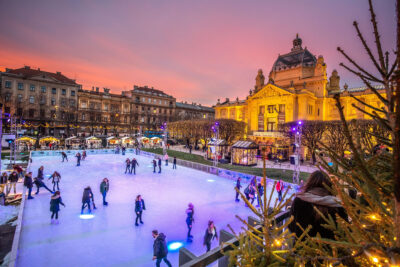
Dolac market is so colourful and the cafés and shops around it are so lively that it’s easy to miss the indoor stalls. Food lovers can check out the butchers, delis and greengrocers, but cheese fans won’t want to miss the room devoted entirely to dairy. Here, you’ll find elderly ladies selling homemade cheeses and butter.
One of Zagreb’s most up-and-coming districts, the area around Martićeva Street east of Ban Jelačić Square, has been quietly making a name for itself as the city’s latest hip spot. Come here for funky bars, restaurants, delis and homeware shops. Just to the south, in one of Zagreb’s smallest parks, is the Meštrović Pavilion, created by Croatia’s most famous sculptor, Ivan Meštrović. This bold, circular building dating from 1938 is the official home of the Croatian Society of Fine Arts and hosts temporary art exhibitions.
In a city of hidden courtyards and stairways, perhaps it’s not so surprising to find a Second World War bomb-shelter tunnel that’s since become a tourist attraction. Grič Tunnel in the Upper Town has six passageways that offer shade on hot days – as well as an atmospheric spot for art exhibitions.
If you’re planning a Christmastime visit, head to Zrinjevac Park to feel like you’ve stepped straight into a fairytale. Held from November 30th until January 6th every year, Advent in Zagreb is a spectacle of lights, festive food and warming drinks that celebrate the festive season.
Need to know
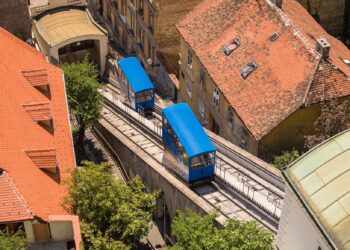
Zagreb’s funicular is being renovated and will be closed until at least March 2026. The tiny railway, one of the shortest in the world, is the most picturesque way of getting from the Lower Town to the Upper Town, but you can still go between both districts on foot.
When to go
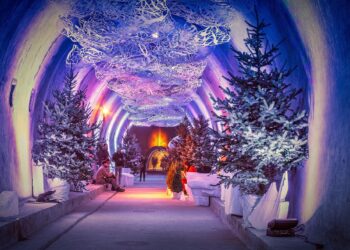
Zagreb is a year-round city with a packed cultural calendar. June is a popular month for festivals, including Zagreb Beer Fest and the IN Music Festival. Things get quieter in July and August when many residents head for the Adriatic, but that’s the time to cool off at Lake Jarun’s beach. Come from late November to early January for the superb Advent market.

